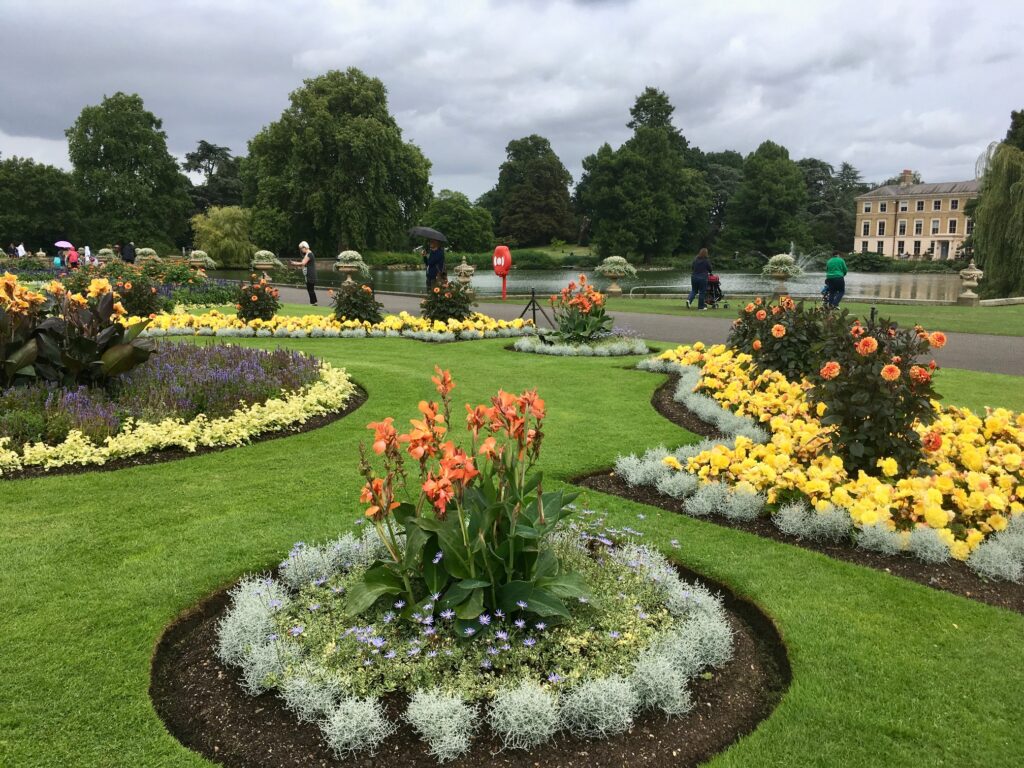Visiting Kew Gardens on the Outskirts of London
With roots dating back to the 18th century, the Royal Botanic Gardens, Kew in London is a must-visit for history buffs and naturalists alike. Visitors will come to understand the site’s royal origins and see first-hand how the staff at Kew excel in the area of conservation and preservation. Here’s what you need to know when visiting Kew Gardens.
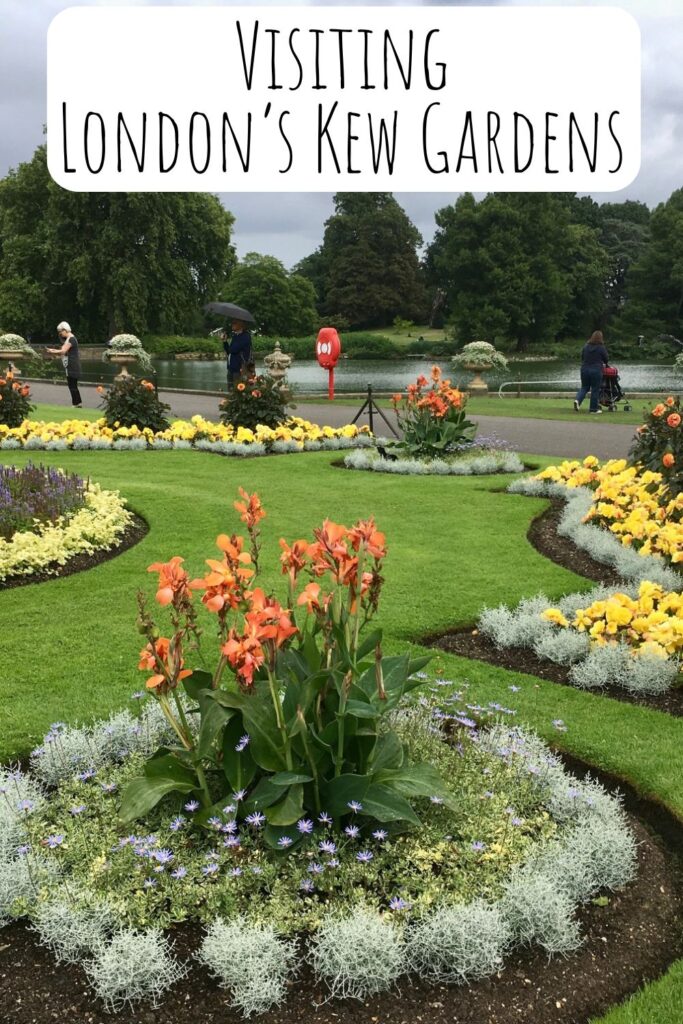
Visiting Kew Gardens? Don’t Miss Kew Palace
If you’ve visited other royal residences, you’ll notice that Kew Palace is considerably smaller than sites like Windsor Castle or Buckingham Palace. Samuel Fortrey intentionally designed it to resemble a stately home, giving it a cozy ambiance compared to its counterparts. King George III, Queen Charlotte, and their 15 children called the palace home. One level of the palace is dedicated to the Queen, featuring her bedroom, drawing room, boudoir, and the reputedly haunted Queen Charlotte’s bedroom.
During his reign, spanning from 1760 to 1820, King George III grappled with bouts of mental illness, leading to periods of seclusion for treatment. The second floor of Kew Palace served as his place of seclusion. Visitors can explore this floor to witness the conditions in which he lived during those challenging times.
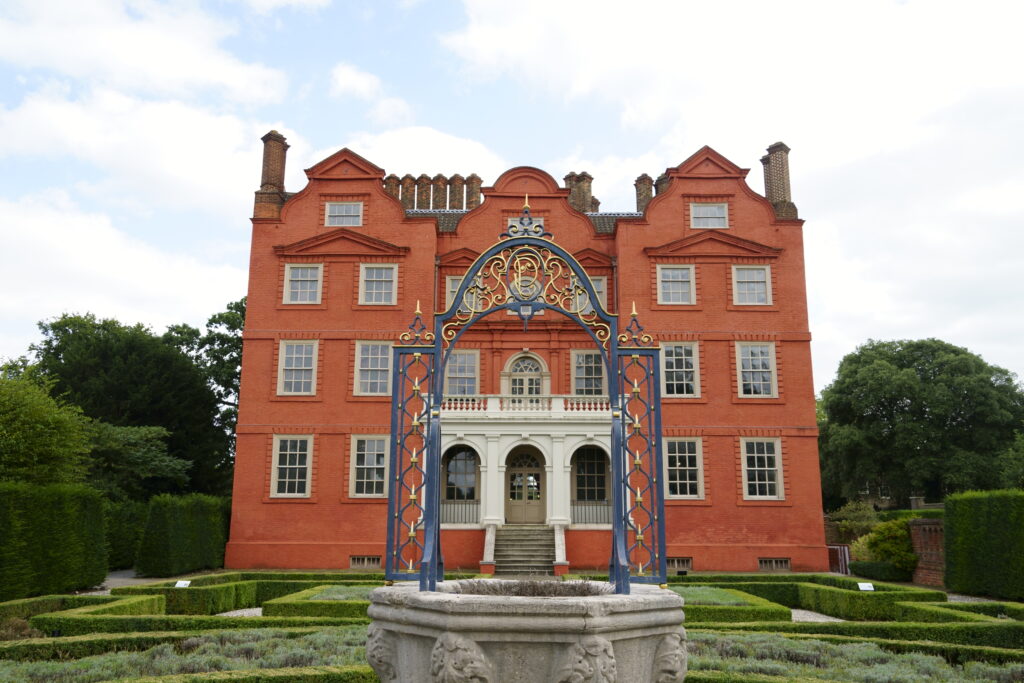
Additional Sites to See on the Grounds at Kew Gardens
Kew Gardens is home to a vast collection of plants and botanicals as King George III had a significant interest in horticulture and agriculture. In fact, as a child King George grew up with scientists and astronomers like John Desaguliers, giving regular lectures at the White House at Kew. George became interested in all things science and nature, interests that continued throughout his reign.
The Waterlily House is another site on the grounds you won’t want to miss when visiting Kew Gardens. Built in 1852 by Richard Turner – an iron founder and glasshouse manufacturer – The Waterlily House is home to species such as the grand South American waterlily and the smallest waterlily, the Nymphaea thermarum. The latter, as a result of the conservatory efforts of Kew Gardens, no longer exists in the wild; the only place it can be seen is at Kew.
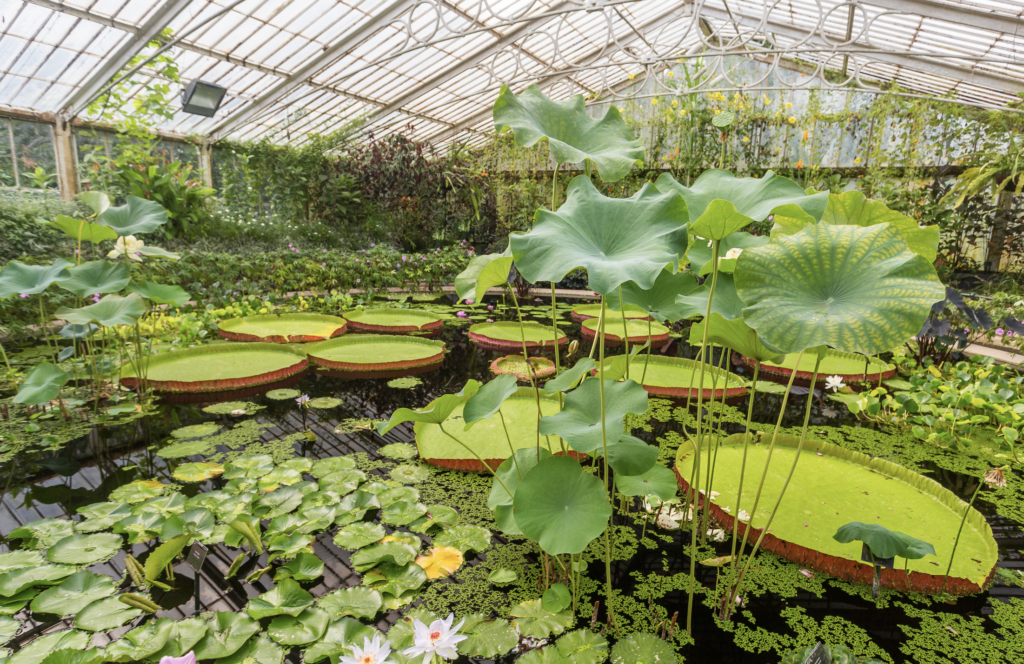
Art enthusiasts will enjoy checking out the on-site gallery. The paintings of Victorian biologist and botanical artist, Marianne North, are on display at The Marianne North Gallery near the Pavilion restaurant.
The Princess of Wales Conservatory is unique in that it boasts ten different climatic zones from desert to rainforest and everything in between. The Davies Alpine House, adjacent to The Princess of Wales Conservatory, houses the flora and fauna typically found in the snow-covered Alpine region. The Palm House is an indoor tropical rainforest and houses plants from around the world.
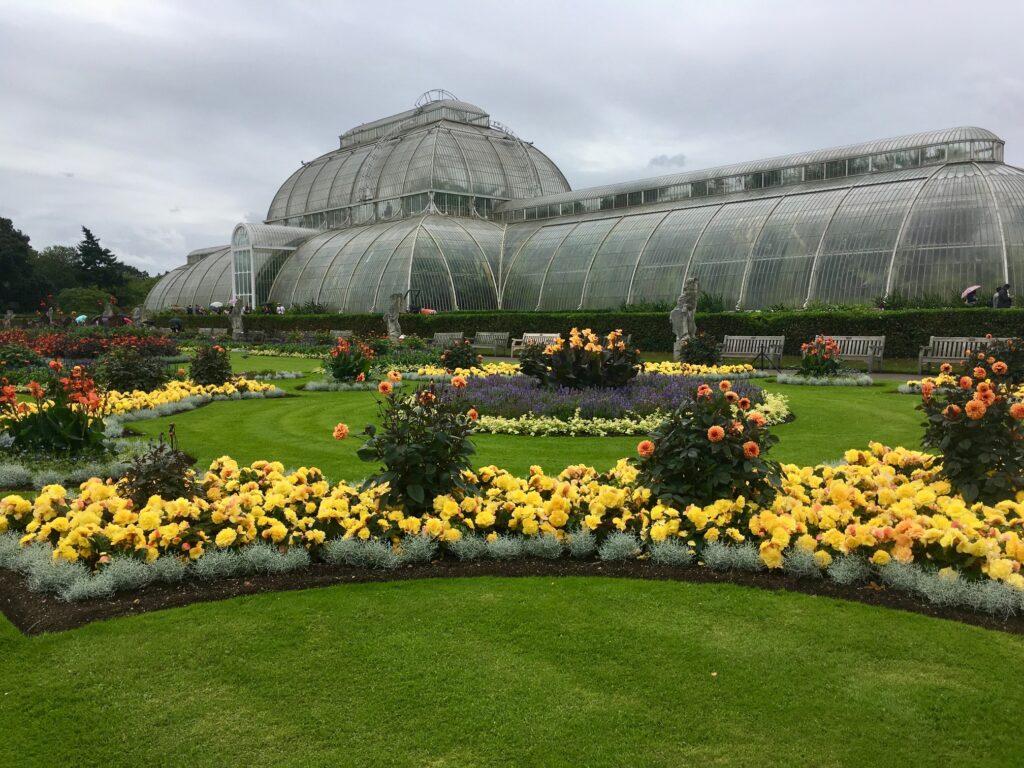
Take a Walk Among the Trees
One tree at Kew in particular, Gingko Biloba, the Gingko tree or “old lions” dates back to 1762. They were planted for King George III’s mother, Princess Augusta, and were native to China. The maidenhair tree as it is also known, is one of the oldest living tree species.
If you’ve ever desired to walk among the canopy of stunning trees like the Gingko, you’re in luck. Kew Gardens hosts The Treetop Walkway, a 656-foot-long structure that extends along the gardens and reaches an approximate height of 60 feet. Designers associated with the London Eye constructed the walkway in 2008. The walkway includes 118 steps leading to its platform, although an elevator is available for those who prefer it. It is wheelchair-friendly, but strollers, prams, and buggies are not allowed.
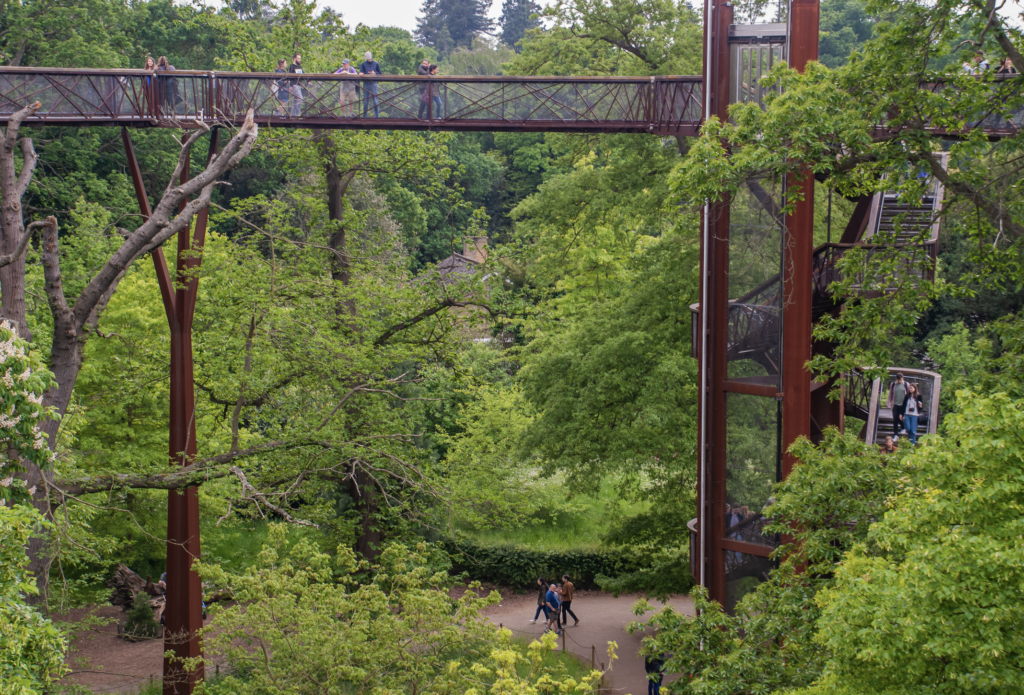
Dining at Royal Botanic Gardens
Midway through your visit to Kew Gardens, don’t forget to stop for a bite to eat. From family-friendly to fancy, the dining options are many. Microwaves are available for warming baby bottles/food. Picnics in the garden are permitted and encouraged.
- The Orangery is open from 10 a.m. to 3 p.m. and includes lighter fare; coffee, tea, and sandwiches
- Family Kitchen & Shop is open from 10 a.m. to 3 p.m. and offers pizza, salads, sandwiches and ice cream
- Pavilion Bar and Grill is open from 10 a.m. to 3 p.m. and includes a menu of burgers and Mediterranean dishes
- The Botanical Brasserie is open from 10 a.m. to 3 p.m. and offers a more formal dining experience
Family-friendly Activities
Families visiting Kew Gardens will delight in exploring the Children’s Garden. Geared for young visitors between 2 and 12, the Children’s Garden offers ample space – the size of 40 tennis courts – for kids to run, jump, play, and just be kids outdoors in a beautiful setting.

Your family will love exploring over 100 trees throughout the garden. One feature, a 13-foot canopy walk, winds its way around a 200-year-old Live Oak. In the interest of inclusivity, Kew Gardens also hosts periodic quiet sessions. These sessions allow a limited number of guests entrance, for a more comfortable and relaxed setting. Quiet sessions must be booked in advance.
What Not to Do When Visiting Kew Gardens
Because Kew Gardens is a conservation space, it’s important to remember to be mindful of the plants and trees. Bikes and skateboards are not permitted and removing plants from the gardens is illegal. To that end, children under the age of 16 must be accompanied by an adult when visiting Kew Gardens. Finally, no pets are allowed on the property. Registered disability assistance dogs are the only exception.
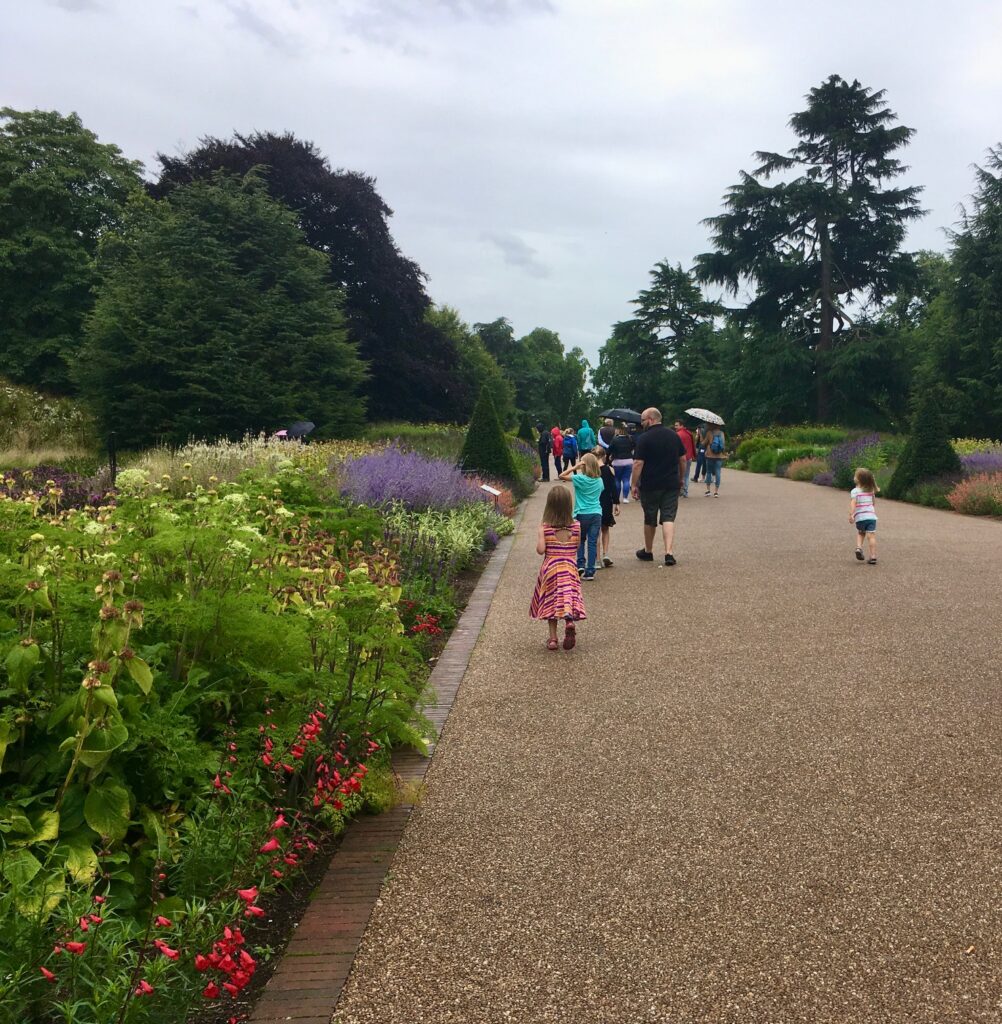
Beyond its historical, scientific, and educational contributions, Kew Gardens is a quiet respite from the hustle and bustle of London. This makes it well worth a trip to enjoy, explore, and experience its peaceful landscape.
